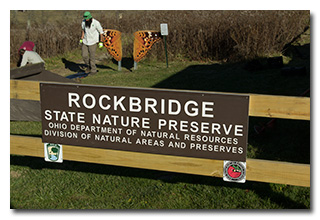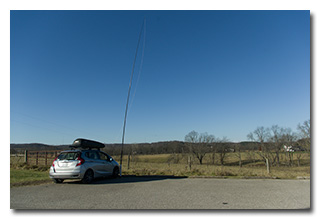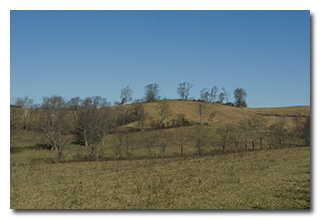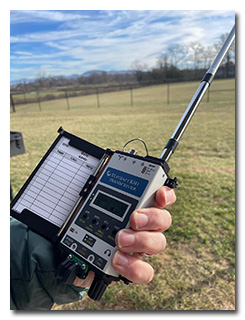
by William Eric McFadden
From the nature preserve's website:
-
Rockbridge Natural Bridge originated millions of years ago, when Ohio lay under a warm inland sea. Rivers flowed into the vast body of water, carrying both fine and coarse grained sands which settled to the sea bottom. Over the centuries, the accumulating sand thickened, compressed and formed the hard sedimentary rock known as Black Hand sandstone. Eventually, great pressure from beneath the earth's surface caused the land in eastern North America to rise, forming the Appalachian Mountains. The inland sea soon drained away, exposing the newly uncovered rock layers to steady erosional processes. The natural bridge soon began emerging in all its grandeur. Wind, rain and percolating groundwater worked together for centuries, carving a deep cave-like recess in the softer midportion of the Mississippian Black Hand sandstone. Gradually, erosional forces also worked along a natural joint plane some distance behind the brink of the cliff. Over the centuries, this ongoing process has widened the crevice, and all that remains of the overhanging ledge is the narrow rock arch.
Pictures
Description
On Friday, December 8, 2023, one member of the Southeast Ohio Radio Adventure Team performed a successful activation of Rockbridge State Nature Preserve in Ohio as part of the Parks on the Air (POTA; link) program.
While on his way to Newark to visit his parents, and following a successful activation of Lake Logan State Park (link), Eric McFadden, WD8RIF, stopped at the nature preserve for a quick activation. Arriving about 1441 UTC, Eric found a construction crew working at the trail-head but the gravel parking area was otherwise empty. Parking his car at the far end of the gravel parking area, Eric deployed his 28½' wire vertical on a Jackite 31' telescoping fiberglass mast on a drive-on base. Mounting his Elecraft KX3 on his car's dashboard, Eric was on the air at 1448 UTC.
As at his previous activations of this park, Eric had good cell-signal and would be able able to spot himself on POTA Spots (link) and to use POTA Spots to identify possible park-to-park (P2P) QSO opportunities.
Finding 20m to still have an S7 noise floor, Eric began his operation on the quieter 30m band by finding himself a clear frequency to run, spotting himself to POTA Spots, and calling "CQ POTA". His first QSO came at 1448 UTC with his good friend K4SWL in North Carolina. QSOs came quickly, with Eric's nineteenth QSO coming at 1504 UTC with KB9RPG in Indiana. This run included QSOs with operators located in North Carolina (2), Michigan, Illinois (2), Tennessee, Michigan, New York, Kentucky, Virginia (2), Maryland, Georgia (2), Florida, Minnesota, Pennsylvania, New Jersey, and Indiana.
In all, Eric made nineteen QSOs, in sixteen minutes of on-air time. All of Eric's QSOs were CW and were made with five watts output.
UPDATE 2023-12-17: It turns out Thomas Witherspoon, K4SWL, was using his Elecraft KH1 transceiver, while operating pedestrian-mobile outside a local library, to work Eric. Read Thomas's complete report and watch the video, here.
(return)



